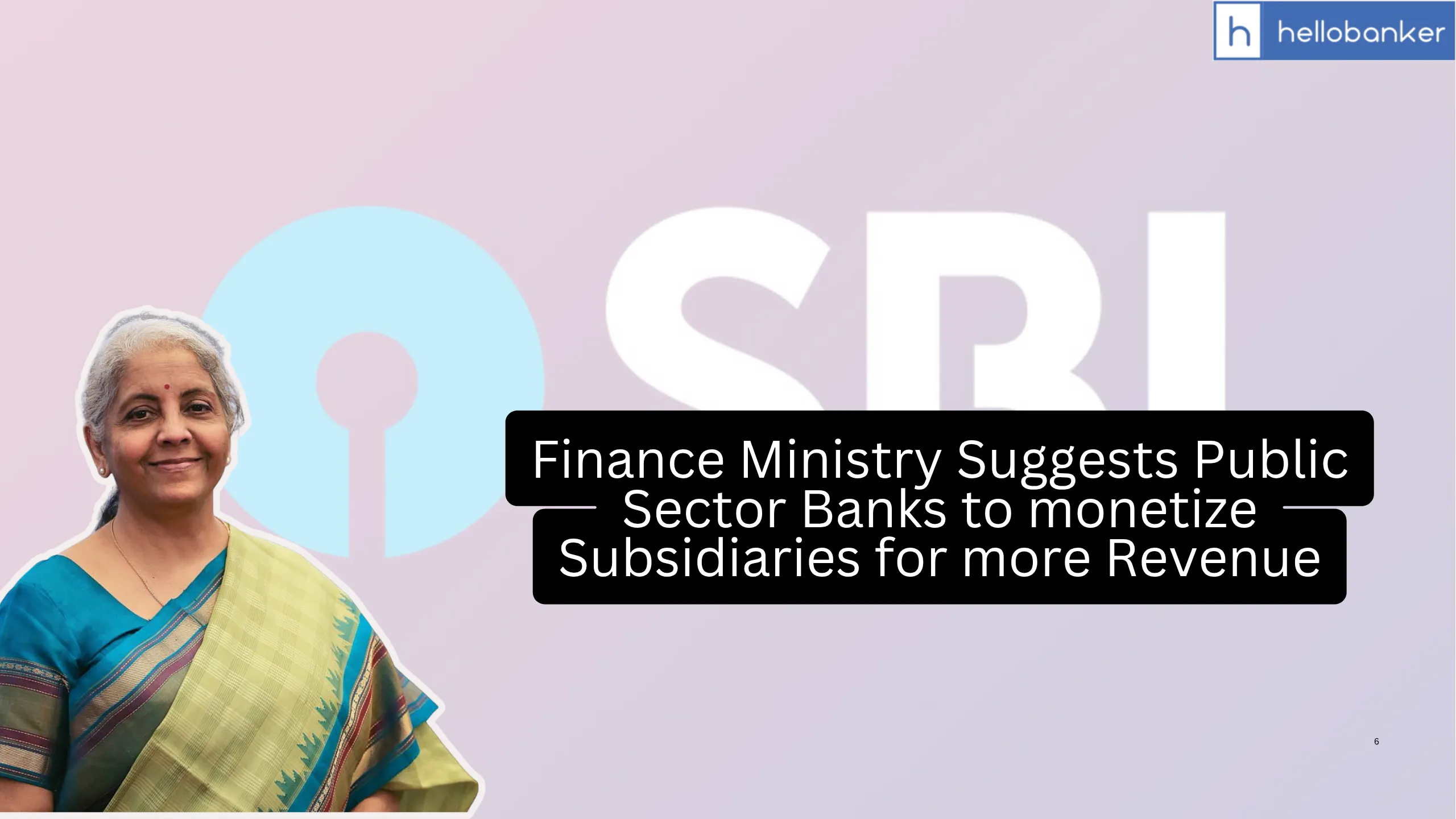| ➡️ Get instant news updates on Whatsapp. Click here to join our Whatsapp Group. |
The Finance Ministry has advised public sector banks (PSBs) to list their subsidiaries or joint ventures (JVs) on the stock market. The idea is to help banks earn better returns by monetising their investments in these businesses — but only after those subsidiaries have grown further.
According to sources, there are currently about 15 such subsidiaries or JVs of PSBs that could be listed through Initial Public Offerings (IPOs) or stake sales (divestments) in the medium to long term.
What Should Banks Do Before Listing?
Before listing their subsidiaries, the government has advised banks to:
- Invest more funds, if needed, to help grow the operations of these companies.
- Strengthen governance and ensure professional, independent decision-making.
- Focus on making these subsidiaries more efficient and better managed.
- Plan listing or stake sales only when the time is right to get the best value.
Examples from SBI (State Bank of India)
One of the biggest public sector banks, State Bank of India (SBI), is considering listing some of its subsidiaries in the future. Two potential candidates are:
1. SBI General Insurance
- This company was formed on February 24, 2009.
- It earned a profit of ₹509 crore for the financial year that ended in March 2025.
- During the same year, it issued 3,71,693 equity shares of ₹10 each, which slightly reduced SBI’s stake from 69.11% to 68.99%.
2. SBI Payment Services Pvt Ltd
- This company is in the merchant acquiring business, meaning it helps businesses accept payments.
- SBI holds a 74% stake, and the remaining 26% is with Hitachi Payment Services.
- As of March 31, 2024, it had over 33.10 lakh merchant acceptance points, including 13.67 lakh Point-of-Sale (POS) machines spread across the country.
- It is one of the largest players in this space in India.
Canara Bank’s Plans for Listing
Another major public sector bank, Canara Bank, has already started the process of listing two of its joint ventures:
1. Canara Robeco Asset Management Company (AMC)
- This is Canara Bank’s mutual fund business, and steps are being taken to bring it to the stock market.
2. Canara HSBC Life Insurance Company
- Canara Bank is planning to list this life insurance joint venture as well.
- The bank has already approved a plan to sell 14.5% of its stake in this insurance company.
What are the Benefits of Listing Subsidiaries in Market?
1. Unlocks Hidden Value
When a bank lists its subsidiary (like an insurance or mutual fund company), it helps discover the true market value of that business. These subsidiaries often perform well, but their value remains hidden within the parent bank’s financials. By listing them, banks can turn that hidden value into real money.
2. Generates Capital Without Borrowing
Through Initial Public Offerings (IPOs) or partial stake sales, banks can raise fresh funds without taking on new debt. This money can be used to strengthen the bank’s capital base, fund future growth, or improve overall financial stability.
3. Encourages Better Governance and Efficiency
Once a subsidiary is listed, it is required to follow strict regulations set by SEBI. It must operate transparently, publish regular reports, and meet investor expectations. This leads to improved governance, stronger financial discipline, and more professional management.
4. Focused Growth and Specialisation
Listed subsidiaries operate more independently. This allows them to focus on their specific business areas, respond quickly to market changes, adopt new technology, and attract skilled professionals. As a result, they grow faster and more efficiently.
5. Improves Investor Confidence
Taking steps like listing profitable subsidiaries shows that the bank is forward-looking, serious about creating shareholder value, and committed to using capital efficiently. This can boost the bank’s stock performance and market reputation.
6. Helps Government’s Disinvestment Goals
Most public sector banks are owned by the government. When they list subsidiaries, it helps the government meet its disinvestment and asset monetisation goals, bringing in much-needed funds without raising taxes.
7. Encourages Public Participation
By listing subsidiaries in sectors like insurance, mutual funds, or digital payments, retail investors get the opportunity to invest in growing areas of the economy, helping build individual wealth and boosting public confidence in the financial system.
